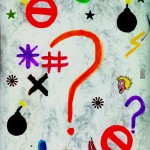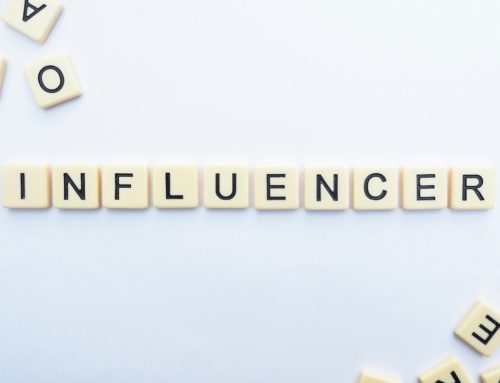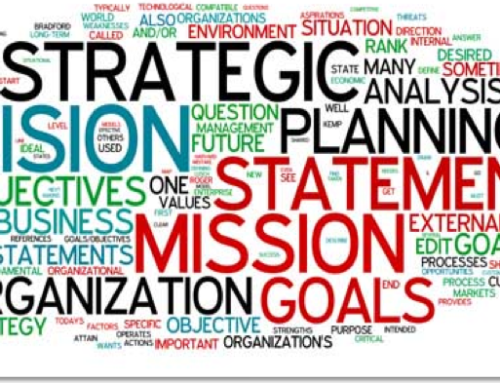 I have to start with the caveat that this title is not original. I recently had the opportunity to participate in an amazing Tweetchat (PRStudChat) for public relations students, professionals, and professors with this exact name.
I have to start with the caveat that this title is not original. I recently had the opportunity to participate in an amazing Tweetchat (PRStudChat) for public relations students, professionals, and professors with this exact name.
For one hour, dozens of folks from around the world weighed in with their thoughts and perceptions. And, as usual, I learned a heck of a lot more than I contributed!
Edward L. Bernays, arguably the “father of Public Relations” and someone I am known to cite a lot, saw the profession as very much a science, reflecting his own upbringing in the company of his “household name” uncle, Sigmund Freud.
In a Fall 1976 article for Public Relations Quarterly, Mr. Bernays stated:
“Advice on action is the important function of the professional, based on knowledge of the social sciences, individual and group behavior, on social responsibility and on experiences in coping with these problems in a professional way.”
And I tend to agree…to a point.
There is a science to what we as public relations professionals do on behalf of clients or employers.
We carefully analyze, using sophisticated research techniques, the environment in which our activities must take place. And we measure, using carefully honed metrics, the outcomes of our efforts.
But I part ways with Mr. Bernays when I talk about the ways in which we develop our programs and craft our messages.
In my mind, at least, there is an art to that aspect of our profession… the careful orchestrating of events, the timing of messaging, the careful melding of medium and message to ensure maximum impact… that absolutely drips creative thinking… sheer artistry!
Ivy Lee, another important figure in the early years, applied the “art” to his work by “humanizing” his clients, placing them in situations that emphasized their “real life” aspects.
If you look at the current definition of “public relations” as espoused by the Public Relations Society of America, there are some key concepts that encompass both sides of the discussion.
- “Strategic communication function”… careful, calculated planning utilizing extensive research (science)
- “Build mutually beneficial relationships”… orchestrating agreements of understanding, both tacit and expressed (art)
When you cut to the chase, public relations is about the careful merging of both.
It’s about creating expectations of concerned publics (a spouse, perhaps?), calling on previous experiences in the formulation of plans of action (an anniversary celebration?), creating an appropriate message (roses?), and carrying out the planned action (romantic dinner for two?).
Building and maintaining relationships is key, and both the artistic and the scientific aspects play equally important parts.
As Arthur W. Page, yet another icon in the public relations profession, said in a speech given to the Institute of Life Insurance in December 1942:
“If a business has a large measure of public approval and the public has a large measure of confidence in it – confidence meaning that it is conducted in the public interest it will give the business considerable freedom.”
Couldn’t say it better myself!
Image: Joel Ormsby via Flickr CC 2.0
![[EVENT]: PR Hacks for Small Biz (online)](https://shonaliburke.com/wp-content/uploads/2021/06/FB-Ad-1200x800-01-01-01-Copy-500x383.jpeg)








[…] said this before…“public relations is both an art and a science.” The “art” aspect comes in our ability to create the communication vehicle through which the […]
have an opportunity to advance their selected research or project area through such activities as publishing in the internationally renowned Leonardo journal or creating a unique art-science project under . http://www.larsjaeger.ch/
[…] patiently tell my Communication students at Curry College and have written previously, “Public relations is both an art and a science, and, to succeed, you have to be proficient in both. The ”˜science’ part lies in our ability to […]
[…] as we integrate tech further and further into PR programs, we keep an eye on the balance between art and science and stay focused not just on efficiency, but also on all the other areas that drive great […]
[…] been a long standing question in our field of whether PR is an art or a science. A question which, when it comes to romance, is easy… it has to be a science. It has all the raw […]
[…] realization got me thinking about our responsibilities as public relations professionals to communicate…to provide advice and counsel…to clients or employers so that they might better […]
[…] I write a lot about the subject myself. Don’t claim to be anywhere near the level of Mr. Bernays, but I’ve been around the block a couple of times. […]
[…] Lists are a no-no for bloggers. In comments, Shonali of Waxing Unlyrical and Shelly Kramer of V3 Marketing each mentioned that lists are a tad offensive due to various and […]
@ashwinsanghi Pls support MAD @makeadiff by SMSing MHRISE P11 to 54646. Pls RT! Could help us reach out to more underprivileged kids!
My first visit to your blog and I’m so glad to have found you and this post. I tend to subscribe to the belief that anything done well has to be both. We always have to mindful of the measurement (esp a hot topic with the advent of social media) but there is an art to communicating a message and being trusted as a credible source by your publics and media alike. Thanks for the provocative post, Kirk.
@susie_parker
Thanks very much for your feedback, Susie. You’re right (or at least “right” in MY opinion!) that it should/must be a combination of the two. We develop plans in a well-researched way and methodical way (science), but the execution is very much a work of art. Even my students agreed with me on this one! :-)
The Ferengi Rules of Acquisition are more appropriate to the practice of PR ;-) @KirkHazlett: Vulcan mindmeld?? No third option?
@joeldon My favorite…More is good … all is better.
@ancitasatija @shonali Thanks very much for sharing, Ancita!
@KirkHazlett @shonali :)
Loved the post Kirk! I remember debating on this topic in my university and everyone had a different opinion. I think PR is both science and art. While PR practitioners are usually known as spin doctors, for how they change their messaging as per a given situation; there is always an element of art and creativity attached to it. And that creativity really helps in attracting the attention of the audience.
@Ancita
Thanks very much, Ancita! I think the key here is to keep the conversation going and to always be mindful of how you are developing and implementing your public relations campaigns and programs. There’s a little of both in the process.
@ancitasatija @KirkHazlett hello satija sabh app kha se ho
@MKTAdvantEdge Likewise, happy weekend!
@jgarant @shonali Thanks very much for the shout-out, Jamie!
@everettmartin Thanks for sharing, Everett!
If public relations is a science, the Scientific Method might then apply to its practice. Where’s the laboratory for developing theory, testing, replication of results and analysis?
@joeldon
In the minds of our target audiences, perhaps? There’s the rub, Joel…no “physical” laboratory in our business…but certainly lots of testing, etc. Thanks for commenting!
@chempetitive Thanks! And thanks for sharing!!
@danimyerspr You’re absolutely right, Dani! Thanks for commenting and sharing!
@danimyerspr Thanks for sharing, John!
@prpiper Thanks, Pam! I appreciate your sharing it!
@bparry08 Thanks for sharing, Bethany!
@tressalynne Thanks for sharing, Tressa!
@erinmfeldman It IS both…in spite of what some might say/think! :-)
@KirkHazlett It is! I think both/and is much more fun than either/or. :)
@fransteps @shonali Thanks for sharing! And, yes, it IS both!
@DrSampyRoy Waving hi and hope you’re great today :) Enjoy the evening!
I think any discipline, when done well, is a measure of both. Clearly, music is art, but those who know it best, understand the science and math behind it. Chemistry is science, but there is an art to it as well. And biology…the human body, clearly science, but an amazing work of art.
Great points, Kirk, and we need to find that “sweet spot”…that balance, and when we do, it will work wonderfully.
@KenMueller
Thanks very much, Ken. I actually asked the question in one of my PR classes, and the responses were pretty evenly split. “Ownership” by either side, be it art or acience, is impractical and will ultimately bog down the entire process.
I really appreciate your feedback!
@KenMueller Yes exactly and that’s why it’s extremely important to have both left and right brain people on any given team. People perceive things differently and when we combine our strengths we’re much more successful together. For instance you may be the most amazing artist or photographer in the world…but if you can’t figure out how to monetize that and make a business (or find someone with that strength to team up with you) then you are talented but your art is now just a hobby. Even art has a creative qualitative aspect and a quantitative numbers aspect if you want to do more than just paint pretty pictures for your grandmother’s house.
@rachaelseda @KenMuellerVery well said, Rachael! Thanks for commenting!